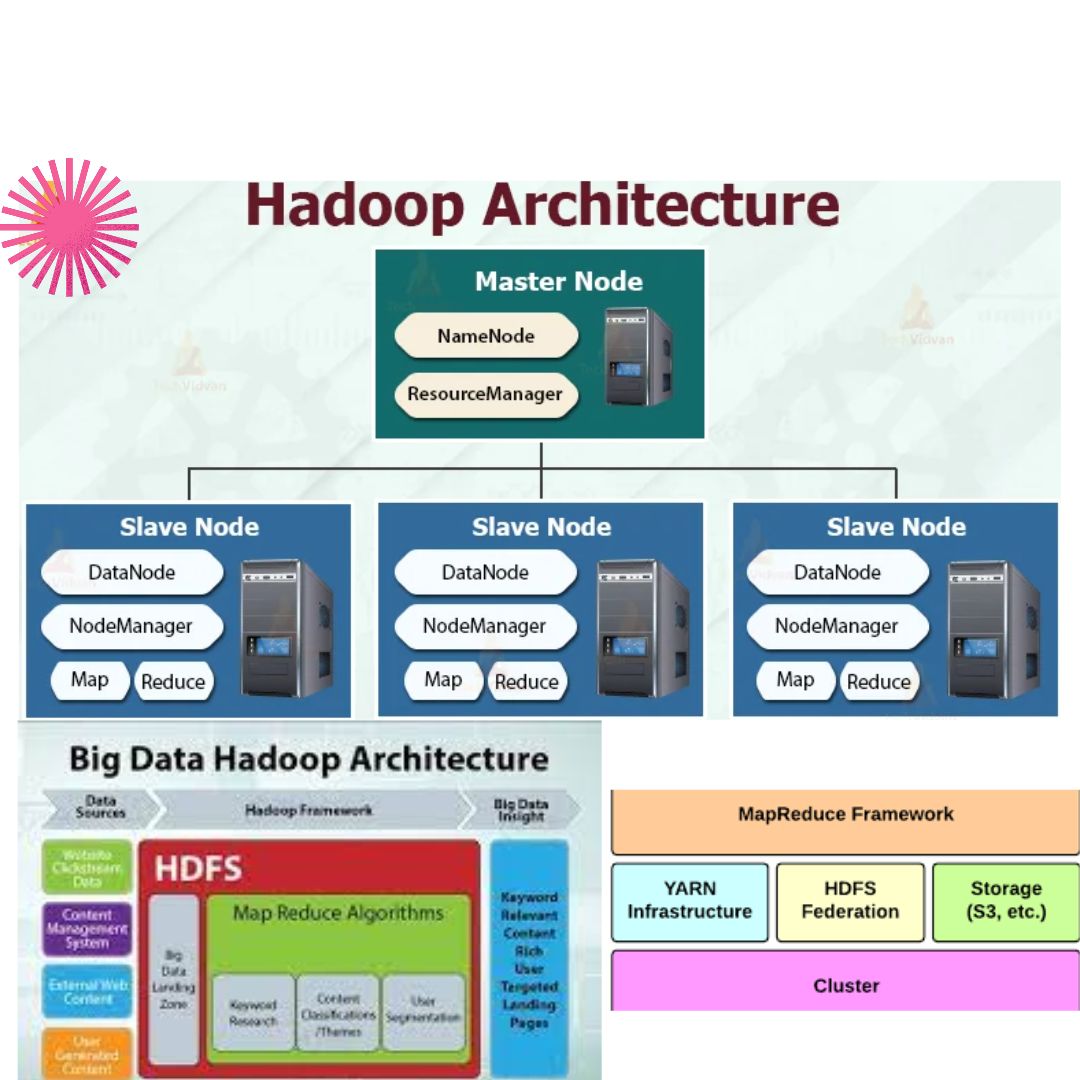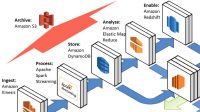Hadoop Ecosystem
Hadoop has a rich ecosystem of tools and frameworks that extend its capabilities. Let’s explore some of the key components of the Hadoop ecosystem:
5.1 Apache Hive
On top of Hadoop, Apache Hive serves as a foundation for data warehouses. It provides a high-level query language called HiveQL, which allows users to write SQL-like queries to analyze large datasets stored in HDFS. Hive translates these queries into MapReduce jobs for execution.
5.2 Apache Pig
Apache Pig is a high-level scripting platform for creating MapReduce programs in Hadoop. It provides a simple and expressive language called Pig Latin, which abstracts the complexities of writing MapReduce programs. Pig Latin scripts are compiled into MapReduce jobs and executed in the Hadoop cluster.
5.3 Apache Spark
Apache Spark is a fast and general-purpose cluster computing system for big data processing. It provides in-memory data processing capabilities, making it suitable for iterative algorithms and interactive data analysis. Spark can be seamlessly integrated with Hadoop and other Hadoop ecosystem components.
Hadoop Applications
Hadoop finds applications in various domains. Let’s explore some of the key applications of Hadoop:
6.1 Big Data Analytics
Hadoop enables organizations to perform complex analytics on large volumes of structured and unstructured data. It allows businesses to gain valuable insights, make data-driven decisions, and uncover hidden patterns or trends within their data.
6.2 Data Warehousing
Hadoop can serve as a cost-effective alternative to traditional data warehousing solutions. It allows businesses to store and analyze large volumes of data without the need for expensive hardware or software licenses.
6.3 Log Processing
Hadoop is widely used for processing and analyzing log data generated by web servers, applications, or devices. By processing logs in Hadoop, organizations can extract valuable information, identify patterns, and troubleshoot issues more effectively.
Hadoop Security
7.1 User Authentication and Authorization
Hadoop provides built-in security features for user authentication and authorization. It supports various authentication mechanisms, such as Kerberos, and allows administrators to define fine-grained access controls to restrict user privileges.
7.2 Data Encryption
Hadoop supports data encryption at rest and in transit to ensure the confidentiality and integrity of sensitive data. It provides encryption mechanisms for HDFS, MapReduce, and other components to protect data from unauthorized access or tampering.
Hadoop Best Practices
8.1 Optimizing Hadoop Performance
To optimize Hadoop performance,it is essential to follow certain best practices. Some of the key practices include:
- Proper hardware configuration: Ensure that the Hadoop cluster is set up on suitable hardware with sufficient memory, storage, and processing power.
- Data partitioning: Divide the data into smaller partitions to enable parallel processing and better resource utilization.
- Data compression: Compress the data stored in HDFS to reduce storage requirements and improve data transfer speeds.
- Task tuning: Configure the number of mappers and reducers based on the available resources and the nature of the data and workload.
- Data locality: Ensure that data processing tasks are scheduled on nodes where the data is already present to minimize network overhead.
- Monitoring and optimization: Regularly monitor the performance of the Hadoop cluster using tools like Hadoop’s built-in metrics and make necessary optimizations based on the observed patterns.
8.2 Handling Fault Tolerance
Hadoop is designed to handle failures gracefully. Some best practices for handling fault tolerance in Hadoop include:
- Data replication: Configure HDFS to replicate data blocks across multiple DataNodes to ensure data durability even in the event of node failures.
- Speculative execution: Enable speculative execution, which allows redundant tasks to be executed on different nodes simultaneously, improving overall job completion time.
- Monitoring and recovery: Implement monitoring mechanisms to detect failures and automate recovery processes to minimize downtime.
- Backup and disaster recovery: Regularly back up critical data and have a disaster recovery plan in place to restore the cluster in case of catastrophic failures.
Conclusion
In conclusion, Hadoop is a powerful framework for processing and analyzing big data. It offers a scalable and cost-effective solution for handling large datasets across distributed computing clusters. With its ecosystem of tools and frameworks, Hadoop provides a comprehensive platform for various applications, including big data analytics, data warehousing, and log processing. By following best practices and ensuring proper security measures, organizations can leverage the full potential of Hadoop and derive valuable insights from their data.





